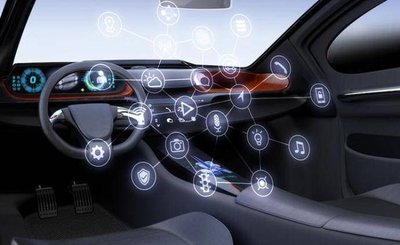
In-vehicle artificial intelligence technology is developing rapidly. Once upon a time, driver monitoring systems (DMS) were only a unique selling point for high-end models. Today, automakers are promoting systems that integrate driver monitoring and cockpit monitoring in their product lines, greatly expanding the scope and depth of AI technology in cars.
However, the advancement of this technology does not depend solely on the unilateral efforts of automobile manufacturers and technology suppliers. With the implementation of the European Union's general safety regulations, DMS has become the standard configuration of automotive safety in the region. In addition, lawmakers in the European Union are considering mandatory requirements for in-car monitoring systems in the near future, and these regulatory measures continue to promote and consolidate the rapid development of in-car artificial intelligence technology.
The rise of generative AI is expanding the boundaries between technological potential and user convenience, and the traditional dividing lines between "human" and "machine" are blurring. Cars, perhaps, are becoming the best carrier for this idea to move from ideal to reality.
Smart in-car sensing technology: How can cars learn to understand the needs of their passengers
For a long time, sensors have mainly assumed the function of capturing the external environment and performance data of the vehicle, and now the focus of the automotive industry is gradually shifting to the interior. In-car sensing technology, also known as in-car monitoring systems, has become an emerging area of great concern to automobile manufacturers and technology companies.
These systems integrate a variety of sensors and artificial intelligence algorithms specifically designed to analyze the vehicle's internal environment, aiming to accurately capture passenger information and behavior patterns, as well as the overall environment of the carriage. With the gradual mass production application of this technology, its great potential in improving driving safety and ride comfort has become increasingly prominent.
For example, occupant detection technology can adjust the activation of seat belt tensioners and airbags in real time based on the actual location of the driver and passengers in the vehicle for personalized safety protection. Even when the vehicle is parked, the technology can effectively identify children or pets in the vehicle, thereby avoiding the risk of potentially fatal heat stroke.
The application of occupant detection technology is not only intuitively reflected in the improvement of safety, but also its potential in personalizing the driving experience. The system optimizes the ride experience by monitoring the passenger's mood and comfort and intelligently prompting the vehicle to adjust environmental Settings such as temperature, lighting and seat position. At the same time, this data can also be used to customize the in-vehicle infotainment system (IVI) to adjust the IVI content and recommendations based on the user's reactions and behavioral preferences, enabling a more personalized interactive experience.
In the smart car industry, the trend of "using artificial intelligence technology to optimize human emotions and behavior patterns" is rising. As generative AI becomes the link between delicate human interaction and efficient machine operation, the car of the future will not only be a basic vehicle, but a comprehensive mobility platform that integrates multiple functions.
Anticipate your future in-car smart partner
For a long time, the car voice assistant mainly undertakes some basic operation tasks. However, with the deep integration of large-scale language models and vehicle sensing technology, this situation is about to change. We will have an intelligent AI partner with empathy and deep understanding of the situation, which will revolutionize the driving experience.
Imagine an innovative in-car assistant that doesn't have to rely on a specific wake-up word to activate the service. The assistant is able to continuously listen, understand deeply, and actively intervene in the conversation at the most appropriate moment, like an intelligent travel companion in the car.
With the data collected by sensors in the car, the assistant can fully grasp the contextual information of the surrounding environment, capturing visual, auditory and social signals, making the interactive experience more vivid and closer to the natural communication between people.
This means that the AI assistant will be able to tell whether the driver is expecting a response or is just pausing to think. At the same time, by analyzing your facial expressions and body movements, it can detect when you want to interrupt your assistant and create opportunities for you to intervene in the conversation.
These advanced AI partners not only take care of navigation and entertainment information systems, but also dramatically improve the safety and convenience of driving. For example, when you talk to a passenger about hunger, fatigue, or getting lost, the in-car assistant will appropriately join the conversation, suggesting nearby restaurants, lounge areas, or rearranging navigation routes. It can intelligently adjust its recommendations based on past interactions and your real-time feedback.
The potential of these systems is particularly great when it comes to security. An empathetic driver monitoring system (DMS) can tailor interactions to drivers' emotional states, ensuring they can focus on driving. Once the system detects signs of fatigue in the driver, the AI partner can boost the driver's spirits by initiating a fun conversation or voice game, thereby increasing his alertness and effectively reducing the risk of traffic accidents.
This deep insight and customized experience is at the heart of what automakers are seeking to differentiate their competitive advantage in future models.
Overcome technical obstacles
For now, this empathetic in-car assistant is still in the prototype development stage. However, integrating it into a mass-produced model may not be as far away as it seems
Core technologies, such as diverse in-car sensing technologies and large language models, are now widely adopted. However, the main challenges facing the technology are the large scale of large language models and their reliance on high-performance computing power. To overcome this challenge, many car manufacturers are actively developing smaller language models (SLMS) that are more streamlined and efficient. These models are able to operate independently within the vehicle, without relying on a network connection, while still maintaining excellent performance. In addition, they continue to improve the capabilities of automotive neural networks to more effectively support the operation of these models.
Build trust in technology
The continuous progress of artificial intelligence and automotive computing power will gradually overcome technical problems. However, the real challenge is to ensure that users feel safe and comfortable using these technologies, while the privacy concerns and ethical implications must be taken seriously and properly addressed.
Indeed, data security and privacy protection is one of the most pressing issues in the integration of new and developing technologies, which requires a great deal of care and attention. The core concerns are about data security and privacy: where is our data stored, who has access to it, and is there sufficient transparency in how it is processed?
With the wide application of artificial intelligence technology in the automotive field, "everything that happens in the car is limited to the car" should become our first principle. This means that drivers and passengers should have absolute control over their own data, so there is an urgent need for small, efficient language models that can operate in offline environments. These models create a solid line of privacy protection, ensuring that all personal data is stored locally in the vehicle and is controlled by the occupants.
Ensuring the safety of these technologies depends on a sound legislative and regulatory system. For example, the European Union's General Data Protection Regulation (GDPR) establishes the right of individuals to control their personal data. This principle - "Your data remains yours" - sets a global benchmark, ensuring that all data collected is protected by strict security measures that uphold the highest standards of data privacy and security.
Add empathy to smart cars
As artificial intelligence makes its way deeper into our daily lives, some skepticism is not only legitimate, but in some cases even necessary. After all, technological developments should improve our quality of life while ensuring our comfort and privacy are not violated. Therefore, when developing new in-vehicle technologies, building user trust and ensuring safety should be prioritized.
However, once we overcome these early challenges, a range of exciting opportunities will open up.
Generative AI is expected to significantly improve the quality of in-car interaction, creating an exclusive and personalized driving environment. As cabin monitoring technology becomes increasingly insightful about us and our surroundings, the way we interact with our cars may shift from basic command operations to smooth and natural conversations. Going forward, these intelligent AI partners will know so much about us that we expect to continue to communicate with them outside the car.
The real value of the combination of compartment sensing technology and generative AI is not only reflected in improving the intelligence level of the car, but also in promoting a more harmonious interaction between people and machines. Ultimately, intelligence has its boundaries, but empathy is what elevates an interactive experience to a deeper level of meaning.
The Products You May Be Interested In
 |
CAR2548TNB-Z01A | AC/DC CONVERTER -48V 2500W | 235 More on Order |
 |
CAR0812FPB-Z01B | AC/DC CONVERTER 12V 850W | 183 More on Order |
 |
CAR2548DCXXXZ01A | DC/DC CONVERTER 48V 2500W | 498 More on Order |
 |
AXH010A0M9-SRZ | DC DC CONVERTER 1.5V 15W | 270 More on Order |
 |
AXH010A0X-SRZ | DC DC CONVERTER 0.8-3.6V 36W | 276 More on Order |
 |
PIM300AZ | DC DC CONVERTER -48V 300W | 316 More on Order |
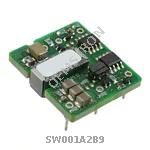 |
SW001A2B9 | DC DC CONVERTER 12V 14W | 482 More on Order |
 |
MH005B | DC DC CONVERTER 12V 5W | 405 More on Order |
 |
JW050B1 | DC DC CONVERTER 12V 50W | 431 More on Order |
 |
HC010A0F1-S | DC DC CONVERTER 3.3V 33W | 239 More on Order |
 |
FW250H1 | DC DC CONVERTER 24V 250W | 177 More on Order |
 |
CC025ABK-M | DC DC CONVERTER 5V +/-12V 25W | 313 More on Order |
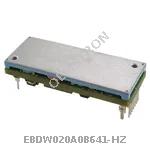 |
EBDW020A0B641-HZ | DC DC CONVERTER 12V 240W | 449 More on Order |
 |
JRCW016A0R841Z | DC DC CONVERTER 28V 448W | 459 More on Order |
 |
QBVW033A0B941Z | DC DC CONVERTER 12V | 485 More on Order |
 |
NSR060A0X43Z | DC DC CONVERTER 0.6-5V 300W | 453 More on Order |
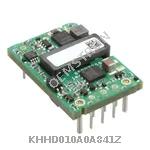 |
KHHD010A0A841Z | DC DC CONVERTER 5V 50W | 461 More on Order |
 |
SSTW001A3B41-SRZ | DC DC CONVERTER 12V 15W | 257 More on Order |
 |
QSDW050A0B641-PHZ | 36-75VIN, 50A/12V OUT, 600W WITH | 459 More on Order |
 |
APXW005A0X3-SRDZ | DC DC CONVERTER 3-18V 45W | 1530 More on Order |
 |
PJT004A0X3-SRZ | DC DC CONVERTER 0.51-5.5V | 135 More on Order |
 |
FKX003A0X3-SRZ | DC DC CONVERTER 0.6-5.5V | 320 More on Order |
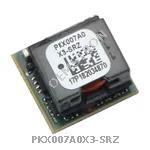 |
PKX007A0X3-SRZ | DC DC CONVERTER 0.6-5.5V | 416 More on Order |
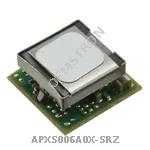 |
APXS006A0X-SRZ | DC DC CONVERTER 0.6-5.5V 33W | 4618 More on Order |

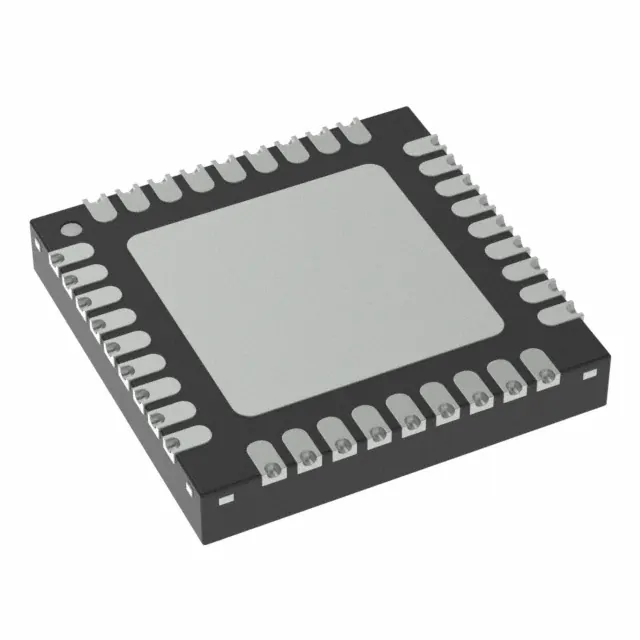 Semiconductors
Semiconductors









 Passive Components
Passive Components









 Sensors
Sensors








 Power
Power









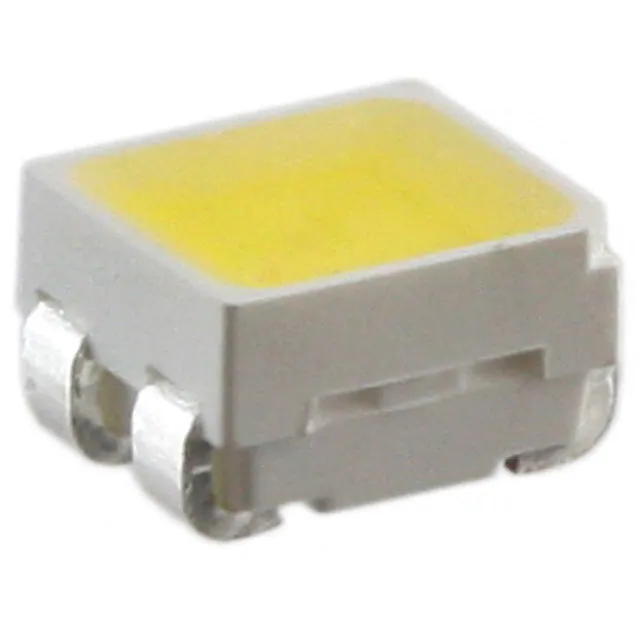 Optoelectronics
Optoelectronics








